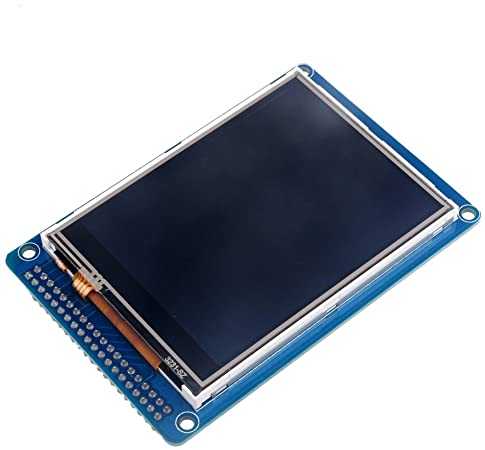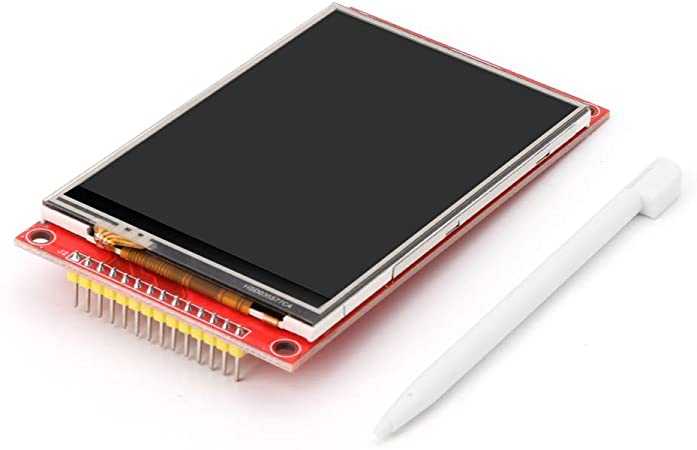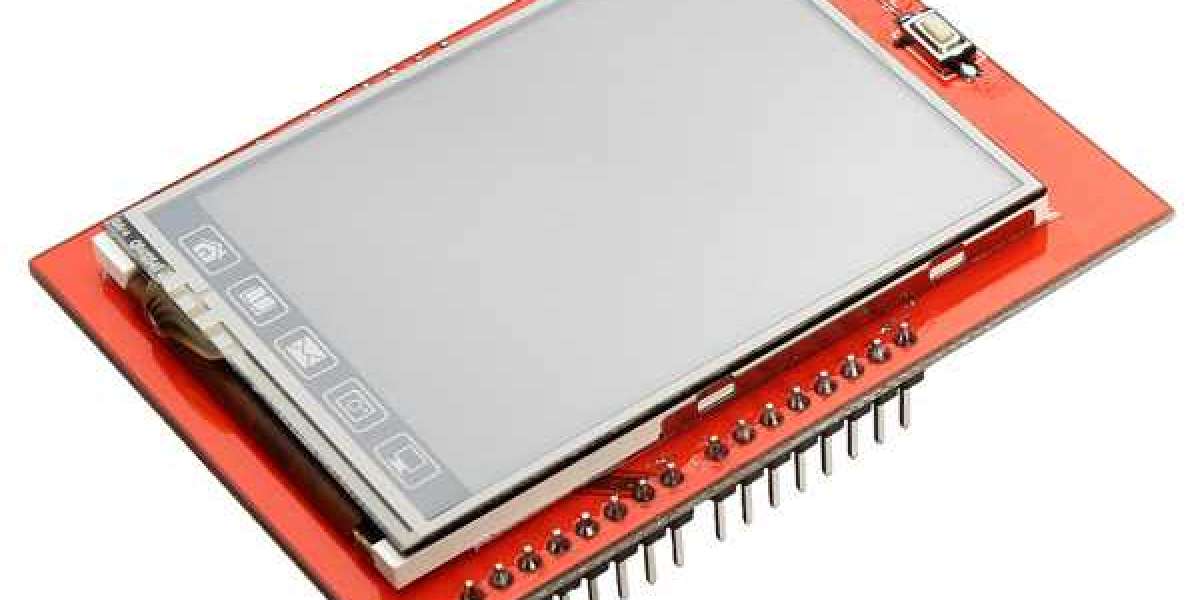There is a great deal of misunderstanding about the distinction between monochrome screen display modes and monochrome screen viewing modes, which can lead to a muddled understanding of the subject. It should go without saying that they are completely oblivious to the benefits and drawbacks of their current situation at this point in their lives. As a result, in order to address the issue at hand, we've written this article in which we express our opinions on the subject matter.
In order to begin, it is necessary to understand what monochrome displays are and how they function as a starting point.
When you're talking about a screen that's only available in black and white, you're talking about an LCD (liquid crystal display). It is common for CMOS image sensors to be made from a variety of different materials including glass or crystal, in addition to polarizers and films, with the connection portion referred to as pin assignment (also known as FPC) or conductive tape in the vast majority of cases. To improve the functionality of the device, the overall design of the module incorporates an integrated circuit as well as a backlight.

In other words, let us consider the issue on a more general level. The LCD portion of the display is the glass portion of the display that is entirely made of glass, and it is the most visible portion of the display. The LCD portion of the display is made entirely of glass, and it is the most visible portion of the display. It should be noted, however, that the term LCD module refers to an entire module rather than a single component in this context because it is capable of being applied directly to finished products rather than just a single component.
LCD displays with a limited color palette are also available as a viable alternative to monochrome LCD display in certain situations.
However, while monochrome LCD technology is an excellent choice for many industrial and consumer applications, it is not always the best choice for all applications, particularly in the automotive industry. Graphic LCDs and segmented-glass LCDs (also known as segmented-glass LCDs) are two different types of high-reliability display technology that are available in two different configurations. The cost of graphic LCDs is higher than the cost of segmented glass LCDs, but they are also more reliable in terms of performance and reliability.
Power consumption of CreateXplay monochrome LCDs is one of their most distinguishing characteristics, and this is one of their most important advantages. Other distinguishing characteristics include the wide range of sizes that are available, the wide range of operating temperatures that are available, and the ability to incorporate polarisers into their designs.
On the basis of its configuration, there are two different types of monochrome screen modules to choose from: The Graphic LCD and the Segment LCD. Both of these types of monochrome screen modules are readily available on the market. On the basis of market share, the Graphic LCD is the more popular of the two types of LCDs currently available.
Monochrome screens can be divided into two categories, which will be discussed in greater depth further down this page.
1. Graphics display screen (Graphics display screen) (Graphics display screen) (Graphics display screen) (Graphics display screen) (Graphics display screen) (Graphics display screen) (Graphics display screen) (Graphics display screen) (Graphics display screen) (Graphics display screen) (Graphics display screen) (Graphics display screen) (Graphics display screen) (Graphics display screen) (Graphics display screen) (Graphic
In the second step, screen segmentation (also known as screen separation) or screen separation (also known as screen segmentation) is performed.
For graphic LCD displays, monochrome graphics Display Modules for monochrome graphics are available in four different configurations, each with its own set of features that distinguishes it from the others.

For those who are interested in how liquid crystal displays (LCD screens) work, as well as how graphics and text are displayed on them, this article may be of particular interest. If you are interested in learning more about it, please continue reading the rest of this article.
To accomplish this, an LCD module with a graphic display screen is used in conjunction with a graphic display screen. It is known as liquid crystal display technology, and it is an electronic visual display technology that creates an electronic visual display by using tiny crystals made from a liquid-crystal solution to create the display, which is then displayed on a monitor. It is possible to generate precise electronic signals with the help of small crystals, and it is possible to use these signals to display images on a two-dimensional screen with the help of these signals.
What about a couple of real-world examples of graphic LCD displays in action to illustrate the point? What are your thoughts?
In recent years, graphic LCDs have been installed in an increasing number of electronic devices such as electronic watches, calculators, and digital readers. Consider the following examples to get an idea of what they are capable of:A wide range of products, such as flat-screen televisions, medical devices, and musical instruments, have been identified as containing these materials, among other things. A graphic LCD would be a better choice than a regular LCD for customers who wish to design their own software and display a variety of images and symbols on the screen.
What are the advantages and disadvantages of using a monochrome liquid crystal display when compared to other types of displays, and how does it differ from them? How does it differ from other types of displays?
Graphic LCDs are popular among manufacturers for a variety of reasons, including their thinness, light weight, and compact dimensions, to name a few of their advantages. The current model, when compared to previous models, is more energy-efficient and environmentally friendly due to the fact that it consumes less power and produces a clearer display of three-dimensional images than those produced by previous models.
For more information on how to use it correctly for your company, please contact us, and we will assist you in making the best decision possible. The fact that they are only one color and contain only alpha-numeric symbols or graphics in a single font size makes them simple to create and simple to read for users. Moreover, because they are only one color and contain only alpha-numeric symbols or graphics in a single font size, they are straightforward to design.
5. The Monochrome Section of the Exhibition is an absolute must-see. The use of a black background on an LCD display helps to create a more visually appealing display. On a black and white background, an LCD display with monochrome segmentation is displayed with monochrome segmentation.
Although it has been in use for a very long time, the segment LCD display is still widely used in many modern applications despite the fact that it has been in use for a very long time. This is despite the fact that it has been in use for a very long time. Although it has been in use for a very long time, it is still not widely accepted.
Monochrome displays have been a common sight in modern technology for many years, thanks to a variety of factors such as dependability, long-term durability, and cost-effectiveness. The screen can be displayed with a wide variety of different icons of various types in addition to letters, numbers, and other symbols. When compared to other displays, segment displays are distinguished by the fact that they only have a single pin for each segment that they contain, whereas other displays have multiple pins for each segment that is present. As a result, there is no movement on the screen at all.
An in-depth discussion of the advantages of segment displays as well as the operation of segment displays will follow. Following that, there will be a thorough discussion of the advantages of segment displays, as well as their operation. Detailed discussion of the advantages of segment displays, as well as their operation, follows. The advantages of segment displays, as well as their operation, are discussed in detail below. What Are the Advantages of Segment Displays, and How Do They Work? What Are the Benefits of Segment Displays, and How Do They Work?

Before deciding whether or not to use a segment LCD display, take into consideration the numerous advantages that they provide. If you're considering using a segment LCD display, take a moment to consider the numerous advantages of doing so before making your decision.
It is readily available for purchase at a reasonable price.
Using educated guesses based on sizes and shapes, we can conclude that segment LCD will be less expensive than graphic LCD, graphic LCD will be less expensive than TFT LCD, and TFT LCD will be less expensive than OLED when the same conditions are followed.
To charge a tooling fee that is the smallest reasonable amount possible under the circumstances
As a result, customers can receive an LCD with the exact dimensions and custom icons and segments that they require without incurring any additional costs, as this technology has the lowest tooling fee of any of the technologies that are currently available. This is especially true for small and medium-sized enterprises. Custom-sized TFT LCDs are possible, but they are extremely expensive; in most cases, a $1 million tooling fee is required, in addition to an annual demand of no less than 1 million pieces. Additional benefits include the ability to create custom-sized OLED displays if needed. Please contact us for more information. In this article, we will not go into detail about the subject matter because of the nature of the subject matter.
During this process, only the bare minimum amount of electrical energy is consumed by the system.
The reflective, transflective, and transmissive modes of light are the first three categories of light modes to be discussed. The other two categories of light modes will be discussed later. Following that, we'll go over the other two types of light modes available to us. When purchasing a reflective segment LCD, customers have the option of selecting whether or not to include a backlight; however, transflective segment LCDs are typically equipped with a backlight as part of the standard configuration. When used in conjunction with an external light source, transflective segment LCDs can be used; reflective segment LCDs, on the other hand, are typically equipped with a backlight that illuminates the display area. Furthermore, transmissional LCD displays require an external light source in order to function properly. This is in addition to the display's internal light source. However, while each and every one of them consumes very little electrical electricity, they all work in concert to reduce the amount of energy consumed.








